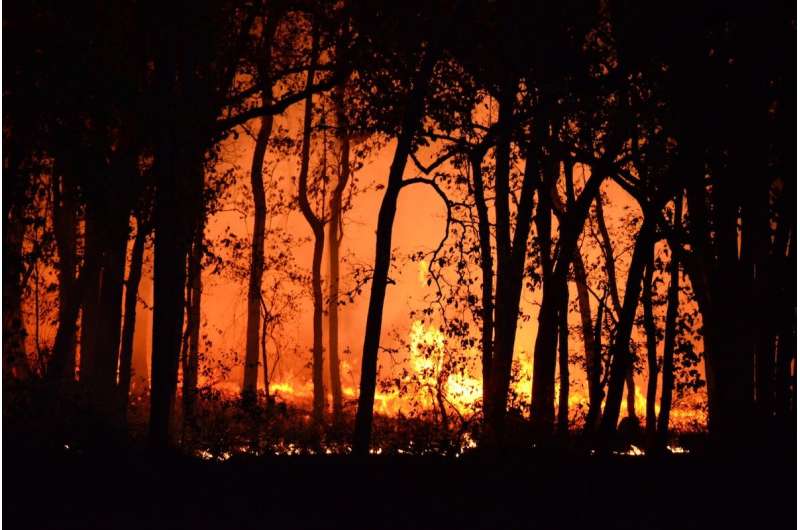How climate change will impact prescribed burning days

As the Bushfire Royal Commission investigates the deadly "Black Summer" and how it could have been prevented, research from the Climate the ARC Center of Excellence for Climate Extremes (CLEX) and Climate Change Research Center at the University of New South Wales shows how climate change may alter prescribed burning in the future across Australia.
Unexpectedly, it is not all bad news, but as the coming century progresses there are definitely changes ahead for our firefighters in Australia when it comes to preparing for a fire season, especially along the east coast of Australia.
Most prescribed burning along this densely populated coastal region takes place in March, April and May, when conditions are safest for hazard reduction efforts. In the future as climate change takes hold and conditions change, climate models show that the burning windows for these months decline over many regions. However, at the same time new burning windows open up from June to August and even into the early parts of September.
"Our research shows that, considering the whole year, the number of prescribed burning days along the east coast of Australia will remain the same and may even increase in some cases but the timing of the burning windows shifts," said lead author Dr. Giovanni Di Virgilio from the Climate Change Research Center at the University of New South Wales.
"This is because the multiple conditions that make for a good day for prescribed burning—like mild and still days—shift to later in winter. It highlights the vagaries of climate change."
To get their results the researchers looked at five variables—maximum temperature, relative humidity, wind speed, fuel moisture, and the McArthur forest fire danger index. Assuming emissions continue to rise at their current pace, they modeled how these would combine at a regional level to create prescribed burning windows in the period 2060-2079. They then compared these results to observations from 1990-2009 to find out how they differed.
Changes to these burning windows occurred over many parts of Australia but it was not uniform across space and time. Much of the Australian east coast and South Australia saw seasonal shifts in burning windows amounting to around a 50% reduction of burning windows in March to May but an increase from June to October.
Meanwhile much of Victoria and in particular the southern regions saw an increase in burning windows during April to May and in some parts of the State through September and October as well.
Only the east Queensland coast saw a general overall reduction in prescribed burn days from April through to October.
While this is mostly good news for those involved in the bushfire mitigation process, a complicating factor arising from previous CLEX research is that the conditions which create suitable prescribed burning windows often correspond with conditions that form inversion layers.
"Our past research showed climate change makes inversion layers in the winter months even more common and these can trap the smoke and fine particulate matter emitted from fires close to the ground. This has adverse impacts on many groups, such as asthmatics and those affected by high concentrations of air pollution," said co-author from the ARC Center of Excellence for Climate Extremes Prof Jason Evans.
"It is clear that climate change will influence future hazard reduction burning activities, shifting them to new times of the year. But it is fortunate that for the next century at least, the available days where we can perform these important activities before a fire season will, for the most part, remain similar or even increase."
More information: Giovanni Di Virgilio et al. Climate change significantly alters future wildfire mitigation opportunities in southeastern Australia, Geophysical Research Letters (2020). DOI: 10.1029/2020GL088893
Journal information: Geophysical Research Letters
Provided by ARC Centre of Excellence for Climate Extremes (CLEx)



















